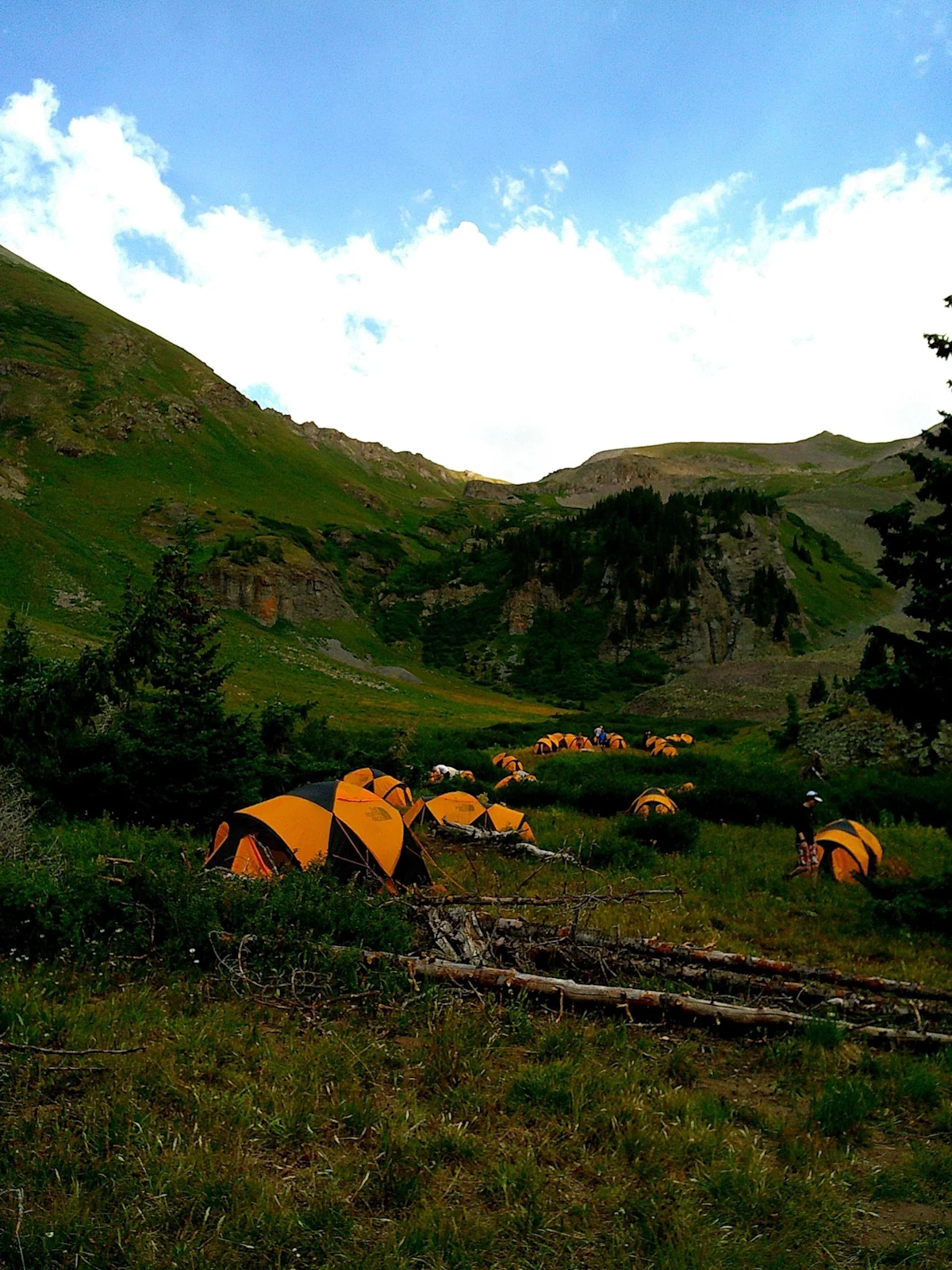In early August, I headed out to a four-day long trip with The North Face to run trails in Colorado’s San Juan Mountains, traversing peaks and ridges between Ouray and Silverton. The plan: camp in backcountry huts, summit Mount Telluride at 13,500 feet, and enjoy the immeasurable bounty that is America’s Alps.
I was excited, but had qualms about how I’d document everything. I didn’t want to be experiencing the entire trip through my iPhone, but I also had reservations that I’d be able to properly photograph it with my aging Pentax K1000 film camera film camera. As a novice trail runner and lifelong sea level resident, I figured I would be pushing myself enough even without trying to devote energy to figuring out proper exposure levels.
A few weeks before the trip, Instagram came to the rescue. I started getting served near-constant ads for a lightweight, screen-less digital camera called the Camp Snap. One could think of the Camp Snap as a digital replacement for a disposable camera. It has no screen and few buttons, but instead of film to be developed, the camera stores photos in a pre-installed 4 GB memory card. At $70, the basic digicam is more than three times the cost of a disposable film camera, but the Camp Snap can store up to 2,000 photos at a time and be reused again and again. (The average disposable camera can only capture around 30 frames on its single 35mm film roll.)
Below, I share my thoughts about whether you should buy the curious camera yourself. Read on for my hands-on Camp Snap review.

Shot with the "Vintage" filter active
Camp Snap vs Disposable Film Camera
The Camp Snap is the answer to a modern predicament: The desire to as many photos as you want affordably, without a screen getting in the way. And as much as I love a film camera, they're not always the most practical to use when you're trying to keep yourself upright while descending a rocky trail. Before I found the Camp Snap, disposables were my answer—they’re lightweight, require no technical skill or prior experience to use, and provide a dose of the almost-nonexistent mystery that makes life, well, fun.
Unfortunately, disposable cameras are wasteful and expensive (if purchasing repeatedly). Developing film, especially, can be costly. When you're shooting with a film camera that has lots of settings to be tweaked and dialed, which you'll get better at using over time, the expense is usually worth bearing for the quality of images you receive. By contrast, you have little control of the quality of images you get from a disposable camera. If they suck, you have to convince yourself they suck in a charming way. There's no round two where you can learn from your mistakes and get better—after 36 exposures, that camera is bound for the trash can (or hopefully the recycling bin).

Shot with the "Vintage" filter active
The Camp Snap retains the tactility and simplicity that makes disposable cameras fun to use, while solving some of their quintessential pain points. The little point and shoot has a flash on and off switch, a window you can use to frame your shots, and a shutter release button. You can't see any of the photos you take on the screenless camera until you bring it back to a computer, which can be a bit daunting. But if you're at all worried your framing or focus was off on a shot, just shoot another. After all, the camera's included memory card has room for hundreds of photos at a time. Bonus, Camp Snap allows you to download a few different filters that can be uploaded straight to the camera, providing variety and novelty for all of your adventures.















